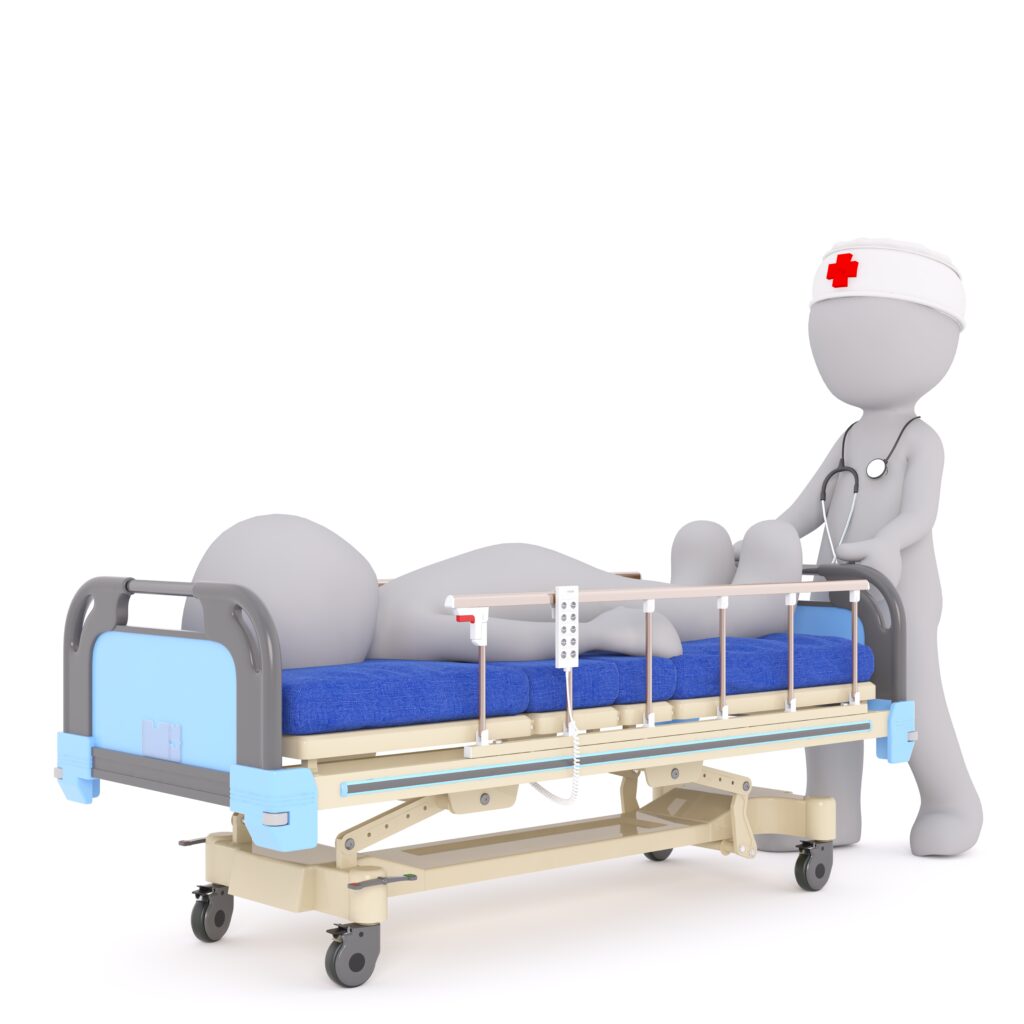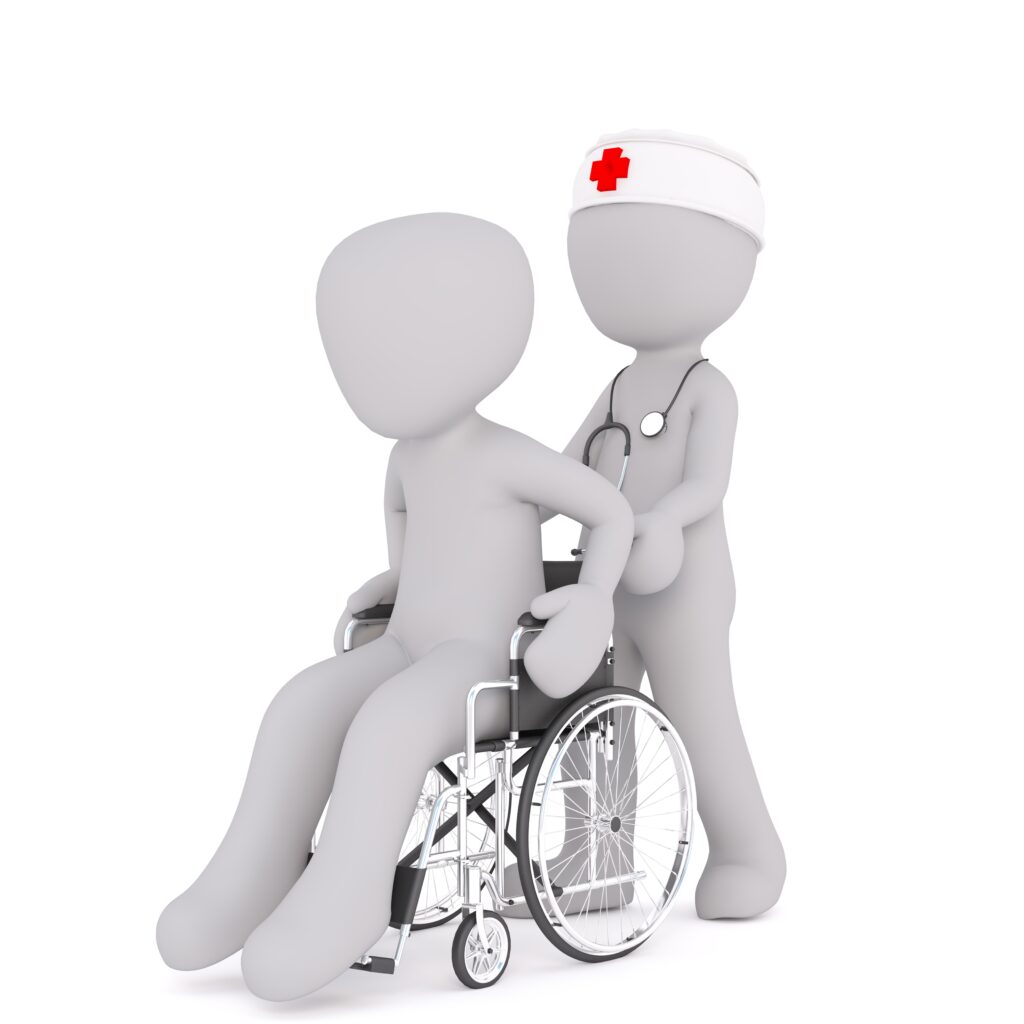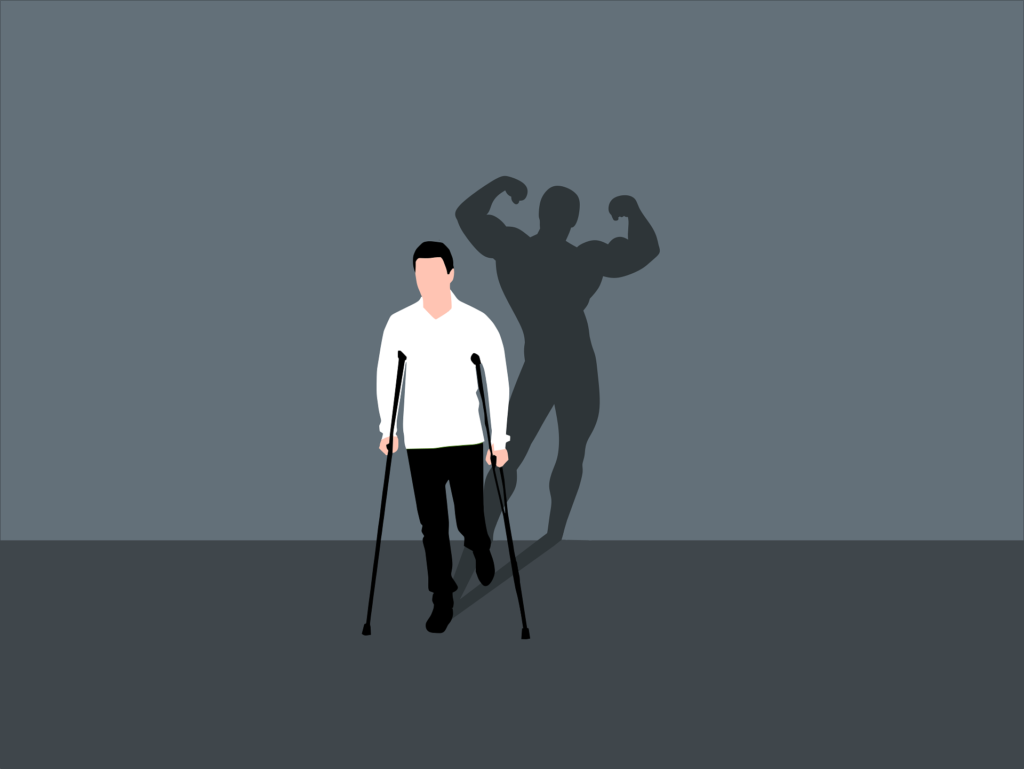At its heart, the sanctity of healthcare is grounded in its fundamental pledge to heal, to provide solace, and to ensure safety. It is a noble profession steeped in humanity’s longing to alleviate pain and suffering, to restore health and vitality. However, just like any other enterprise embarked upon with the best intentions, medicine has its fair share of complications and challenges.
The complexities lurking within the healthcare industry are many, from the intricate there are many patient diagnoses to the multifaceted nature of tr. Unfortunately, These complexities are compounded by the fact that the field of medicine is not immune to faults or errors. These errors surface despite the stringent measures in place, revealing the need for a constant and vigilant approach to the practice of medicine.
Among the various issues that plague healthcare, the most formidable and ever-present challenge is the persistent threat of medical malpractice. This alarming issue directly undermines the very essence of healthcare – the safety and trust of patients. When malpractice rears its ugly head, it significantly blows patients’ faith and trust in their healthcare providers and can have devastating consequences.
In this exhaustive exploration, we aim to delve deeper into the myriad aspects of this critical issue. We will unveil the various facets contributing to the prevalence of medical malpractice, shedding light on the underlying causes and consequences.
Further, this exploration would be incomplete and only complete with unyielding and unremitting efforts being made to improve patient outcomes. We will scrutinize the various preventative and corrective measures implemented to curtail the incidence of malpractice and cocoon the rights and safety of patients. Thereby ensuring that the sanctity of healthcare remains intact and continuously fortified for the future.
The Harrowing Reality of Medical Malpractice
Understanding the Extent of the Issue
Day in and day out, thousands upon thousands of patients entrust their very lives to the skilled hands of medical professionals. They do so with the expectation and assumption that these professionals’ expertise is on par with the tremendously high stakes involved within the healthcare field. It’s an undeniably complex and demanding field where the margin for error is virtually nonexistent. Yet, the harsh reality is that errors can and do occur.
When these unfortunate instances take place, the repercussions can be devastating. Medical malpractice, an umbrella term used to denote a vast array of incorrect, negligent, or simply inappropriate actions or even failures to act by healthcare professionals, can lead to extreme patient harm. This harm could be physical, emotional, or both, changing patients’ lives in the blink of an eye.
The statistics surrounding medical malpractice are as sobering as they are eye-opening, casting a grim light on the reality of the situation. Hundreds of thousands of malpractice cases are reported around the globe annually. Each case isn’t just a number but a profound personal tragedy. Every story represents a life irrevocably altered, a family left in distress, and a potential erosion of the public’s trust in the healthcare systems designed to safeguard their well-being.

This reality underscores the urgent need for rigorous standards, constant vigilance, and an unwavering commitment to patient safety in the medical field. As we grapple with these sobering figures, it becomes clear that the fight for better healthcare practices is not just an institutional obligation but a shared responsibility.
Illustrating Cases and Their Impact
Behind every medical malpractice statistic is a personal story often underscored by an entire family grappling with the aftermath of a medical mistake. These errors vary in nature, ranging from misdiagnoses that lead to extended periods of unnecessary pain and suffering to surgical blunders that result in life-altering complications and ongoing medical issues. The impact of these mistakes on patients cannot be overstated; it is deep and enduring and impacts every aspect of their lives.
When we closely investigate and analyze specific case studies, we can more fully comprehend healthcare malpractice’s widespread and profound implications. The ripple effects extend beyond the individual patient, impacting families, communities, and society. This makes it all the more urgent to address the root causes of such alarming occurrences. From reforming medical education to implementing stringent quality control measures, the time to act is now.
Every story hidden behind a statistical figure reinforces the grave necessity to confront and eliminate medical malpractice. It is a challenging and complex mission essential for the well-being and safety of patients everywhere. Remember, each statistic is not just a number but a life forever changed by medical error. The urgency to address these errors’ root causes and work towards eliminating them is more pressing than ever before.
The Legal Armamentarium of Patient Protection
An Overview of Patient Rights
Physicians, hospital systems, and other healthcare facilities are certainly not detached from being held responsible for their actions. There are laws in place across the globe that protect patients’ fundamental rights while ensuring they have access to legal recourse should they become victims of malpractice. Such malpractice could range from incorrect diagnoses and treatments to improper procedures leading to physical or psychological harm. In our dedicated effort to create transparency and clear understanding for our readers, we dive deeper and unpack the complex legal framework around healthcare.
We delve into this framework, which encompasses multiple elements of patient rights. The first among these is the right to informed consent. Patients have the privilege to fully understand the nature of their condition, the potential treatments available, their possible side effects, and the associated risks before making a decision. In fact, informed consent is not just a right but a key principle that underlies ethical medical treatment.
A patient’s access to personal medical records is another integral component of this legal framework. According to the law, a patient can request and must be granted access to their medical data at any point, enhancing transparency and promoting trust between the patient and the healthcare provider.
Another critical legal right patients have is the ability to file a suit for damages should they experience medical malpractice. If a patient has suffered harm due to medical negligence or misconduct, they can seek legal justice and compensation for any resulting damages.
Ultimately, the laws governing healthcare were designed to safeguard patients against any potential mistreatment or neglect. Through understanding these rights and legal nuances, patients can ensure that their healthcare experiences are conducted under the highest standards of professionalism and respect.
Navigating the Judicial Landscape
Initiating a medical malpractice claim and bringing it to court is undeniably a complex and multifaceted process that tends to unfurl in many unexpected ways. It regularly involves several key steps, often involving consultations with medical experts who can shed light on the professional standards that might have been violated. The process also embraces depositions, a critical part of the legal proceedings, where all parties involved share their version of events under oath to eliminate any disparities or misconceptions.
Furthermore, a thorough review of the patient’s medical history is vital. This step is essential to understand the patient’s health condition before the alleged malpractice, tracing back their health journey, and identifying any pre-existing conditions that may have contributed to their present condition. This review can sometimes uncover a clear connection between the alleged misconduct and the patient’s current health status.
Here at our company, we provide invaluable insights into the legal procedures that patients and their legal representatives face when seeking redress. We strive to ensure that our clients are well informed and prepared for every step of the journey. By elucidating the daunting legal pathways and explaining the intricate necessities of a malpractice suit, we empower individuals to confidently navigate the justice system toward a resolution.
The Multi-Dimensional Challenges in Ensuring Patient Safety
Communication Breakdowns
Communication is one of the most considerable hurdles to cross in the continuous fight against medical malpractice. There is an increasing recognition that a substandard transfer of critical information between various teams within the healthcare system and the interaction between patients and their respective healthcare providers can often trigger confusion and unfortunate errors. This poor communication can act as a roadblock in providing quality care and may result in unnecessary complications and adverse health outcomes.
Further, this lack of effective communication is more than just a minor inconvenience. It’s a major issue with life-altering consequences regarding patient safety and the overall quality of healthcare. Misunderstandings and communication breakdowns can lead to medical errors, missed diagnoses, and subsequent issues that could have been avoidable with proper communication.

To tackle this complex issue, we comprehensively explore the root causes of these communication breakdowns. We strive to gain a profound understanding of what leads to these miscommunications that often become the precursor to larger problems in the healthcare delivery system.
Moreover, we are committed to developing strategies to foster more transparent and effective communication pathways. Through this focus, we aim to streamline the flow of information, minimize misunderstandings, and promote a more collaborative atmosphere where every member of the healthcare team and the patient are on the same page. By enhancing this critical aspect of healthcare, we can make significant strides in combating medical malpractice.
Lack of Standard Procedures
The variability inherent in medical practice can be likened to a double-edged sword. On one hand, it fosters flexibility, allowing healthcare professionals the scope to cater to each patient’s unique and individualized needs. This means that every patient can receive care excellently tailored to their specific requirements and conditions, ensuring a more personalized approach to healthcare.
However, this variability is not without its downside. It inadvertently creates room for potential errors, as a consistent approach can lead to understanding and missteps. This can risk the health and safety of patients, leading to compromised care and potential loss of trust in healthcare providers.
The solution to this lies in establishing and enforcing standard operating procedures (SOPs). By setting a reliable and tested standard of operations and practices, healthcare providers can effectively mitigate these risks. SOPs provide:
- A consistent guideline for care.
- Reducing the likelihood of errors and oversights.
- Ensuring a safer and more dependable healthcare delivery.
Yet, while enforcing these standards, striking a delicate yet vital balance is crucial. We need to ensure that the imposition of standard protocols does not compromise the need for patient-oriented care. The balance between standardizing care while preserving patient-centered approaches is a complex challenge that needs to be addressed.
In this context, we delve deeper into this issue, examining how this balance can be struck, ensuring safe and efficient healthcare delivery while always keeping sight of each patient’s individual needs and conditions.
Staffing Shortages and Fatigue
Our modern healthcare industry is constantly under immense pressure due to a demand routinely outpacing its supply. With an ever-increasing population in need of medical care, the need for adequate staffing becomes even more critical. However, the reality is grim, characterized by debilitating staffing shortages and chronic overwork. These factors take their toll physically and mentally on medical professionals, leading to fatigue and burnout.
Burnout, however, isn’t just a personal crisis. When medical professionals suffer, so do their patients. A direct correlation exists between fatigued healthcare providers and a higher incidence of errors. Such errors, whether misdiagnoses, prescription mishaps, or operational mistakes, can have serious and, at times, fatal consequences.
Addressing these pressing issues must be a priority, and that’s where our focus lies. We aim to delve into the heart of the matter, exploring solutions that can relieve the burden on healthcare workers. By tackling this, we can make a significant difference in staffing levels head-on and make several healthcare professionals. It isn’t just about creating a comfortable work environment and enhancing patient safety. Providing ample staff can help reduce errors, increase efficiency, and improve overall patient care.
This is a battle worth fighting, a change worth striving for. The healthcare industry is not just an economic sector but an ecosystem of care, healing, and hope. And every step taken to alleviate the challenges faced by its heroes, our healthcare workers, is indeed a step towards a healthier and safer society.
The Haunting and Enduring Impact on Patients
Understanding the Emotional Fallout
The consequences of malpractice extend far beyond the surface-level physical damage. They seep into the psyche of the affected individuals, leaving a profound emotional toll that is felt deeply and intimately. Both patients who have directly suffered from these medical errors and their loved ones who deeply empathize with them grapple with an array of psychological responses. They often face and endure intense trauma, a growing distrust and skepticism of the medical profession as a whole, and an overwhelming sense of betrayal from those they put their faith in to assist them in their battle against disease and ill health.
These deep-seated emotions develop into wounds that leave lasting scars on their mental well-being. By delving into the psychological impact of malpractice, we emphasize how paramount it is to address not just the immediate medical needs sparked by such errors. It is also our responsibility to provide comprehensive, thoughtful, and compassionate support for patients’ emotional restoration and recovery. In doing this, we can ensure that their healing is not confined to their physical ailments but extends to help them regain their lost trust and rebuild their emotional strength, thereby nurturing their overall well-being.
Long-Term Consequences and Rehabilitation
For numerous patients, the pathway to revitalization and health restoration is frequently a long, strenuous, and complex journey. It’s not merely a physical ordeal but an emotional and psychological challenge that has far-reaching impacts on their day-to-day lives. This journey is especially demanding for some who require lifelong care, constant supervision, or extensive rehabilitation, a harsh reality that can drastically alter the course of their lives.
In our comprehensive exploration, we look into these patients’ multifaceted challenges after experiencing medical malpractice. We delve into their realities, understanding the hardships that ensue post-malpractice and the overarching difficulties that persist as they grapple with the consequences of healthcare errors.
Our exploration is painstakingly thorough, considering the depth and breadth of their experience. We acknowledge that these patients have unique, evolving needs and requirements, which necessitate immediate attention and timely intervention. These needs aren’t simply medical – they’re psychological, financial, emotional, and social, and each demands a distinctive approach for them to be effectively met.

As these patients strive desperately to reconstruct and rebuild their lives, we lay out the crucial steps that need to be taken to help them navigate this daunting journey. Each step empowers them, providing them with the support and resources to regain their strength, reestablish their autonomy, and reclaim their livelihood.
This journey may be brimming with obstacles, but with the correct care and support, the road to recovery, though long and arduous, is not impossible to traverse. It is our commitment to explore, understand, and address these evolving needs as we stand alongside those trying to rebuild their lives after traumatic medical malpractice experiences.
Proposing Solutions for Improved Patient Safety
Implementing Best Practices
Embracing the best practices, notably evidence-based medicine, plays a pivotal role in significantly diminishing the probability of errors occurring in a medical environment. This adoption isn’t simply theoretical but has been mirrored in real-world scenarios and results. Through a robust examination of case studies and practical examples, we illustrate effectively how these best practices have been instrumental in fostering success in various healthcare settings. These case studies reveal the transformative power of applying best practices and present a compelling case for their widespread adoption. They offer insights into the practical implementation of evidence-based medicine and underscore its potential in various scenarios. Grounded in real-world experiences and outcomes, these case studies serve as valuable tools for learning and adaptation. Pieces of evidence from different healthcare settings worldwide merge to tell a story of success driven by adopting these best practices. These best practices and their successful implementation are beneficial and essential in the pursuit of error-free healthcare delivery.
Leveraging Technology for Patient Protection
As pioneers in the swiftly evolving field of medical technology, we are at the forefront of presenting an array of innovative tools designed to significantly enhance patient safety. These tools span a broad spectrum, each serving a unique and indispensable purpose. One of the key tools in our inventory is state-of-the-art electronic health record systems. These intelligent systems meticulously track and document every detail of a patient’s progress throughout their journey, effectively eliminating traditional paperwork while reducing the scope for human error.
But that’s not all. We also provide advanced real-time monitoring systems. These powerful systems can identify and flag patient health deviations in real-time. This ensures immediate medical intervention but also aids in preventing the progression of any potential health issues.
At the heart of our offerings is the mandate to prevent malpractice in all forms – a testament to our unwavering commitment to patient safety. Therefore, each technological advancement we introduce to the market is crafted with utmost precision and subjected to rigorous testing, ensuring they act as unquestionable safeguards against malpractice.
In essence, we are at the vanguard of a new era in medical technology where innovation doesn’t merely mean improvisation but a relentless pursuit of perfection that guarantees the highest level of patient safety.
Continuous Training and Education for Professionals
The healthcare industry is an ever-changing and vibrant landscape continually fueled by advancements in medical knowledge and technology. This continuous evolution makes it one of the most dynamic sectors in the world today. The breadth and depth of medical knowledge are expanding at an unprecedented rate, introducing new protocols, procedures, and treatments regularly. This rapid pace of change necessitates continuous professional development, a concept that has become absolutely critical for any healthcare practitioner wishing to maintain an informed understanding of their field.
It’s no longer an option but a professional obligation for healthcare practitioners to stay at the forefront of these changes and remain updated with the latest protocols and procedures. They must always learn, evolve, and adapt to these shifts to provide the best possible care for their patients. It is here that the significance of our work becomes apparent.

Our team is committed to investigating the profound impact of training and educational programs on preventing malpractice within healthcare institutions. By digging deeper into this critical issue, we aim to understand how these educational interventions can reduce the likelihood of errors and contribute to patient safety. Our work involves identifying the gaps in current systems and proposing constructive solutions to ensure medical professionals have the most current and reliable knowledge to guide their practice. This is our ongoing mission, and we are dedicated to contributing towards a safer, more efficient healthcare landscape.
Empowering Patients in Their Healthcare Journey
Educating Patients about Their Rights
Understanding and promoting patient awareness is crucial in maintaining and respecting their rights. It is important to identify that safeguarding these rights hinges greatly on the knowledge patients possess regarding their entitlements. We take it upon ourselves to detail the necessary information that each patient should be aware of and comprehend about their rights, thus supporting their ability to make well-informed decisions about their care. Beyond simply providing this crucial information, we also emphasize the channels and platforms through which this valuable knowledge can be effectively disseminated. We understand that in today’s technologically advanced world, the modes of communication have diversified and expanded. Hence, we leverage these platforms to reach every patient, ensuring they are well-versed in their rights. Our ultimate goal is to empower patients, transforming them from mere care recipients to active, knowledgeable participants in their healthcare journey. By achieving this, we respect their rights and provide them with the tools they need to claim them.
Fostering Patient Advocacy
With a spectrum stretching from support groups to patient advocacy organizations, a vast array of channels are available for patients who need to seek assistance and amplify their voices. These key platforms serve as remarkable conduits for patients battling diverse health issues. We venture into an in-depth exploration of the invaluable role of advocacy, a role paramount in driving systemic changes in the healthcare sector. By passionately pursuing the cause of health reforms, advocacy initiatives ensure that patient perspectives are heard and central to healthcare reform efforts. These efforts are designed to redefine the healthcare landscape, ensuring that patients’ needs and experiences are integral to the decision-making process. The influence of advocacy in healthcare cannot be undervalued as it is pivotal in the quest for an improved, patient-centered healthcare system.
Conclusion: The Unyielding Commitment to Patient Safety
As we draw our conclusions, we urgently underline the continuing struggle against medical malpractice, a battle requiring unwavering resolve and a strong, collective commitment from every participant in the healthcare system. This includes healthcare professionals, administrative institutions, legislative bodies, and patients.
The fight against medical malpractice necessitates fostering an environment where safety is not a mere aspiration but the norm. By implementing meticulously defined protocols, we can lay the foundations of a culture grounded in safety against medical errors. By dedicating ourselves to protecting and advocating patient rights, we can pioneer reforms that will make significant headway in creating a healthcare landscape where patients’ well-being and legal rights are sacred and inviolable.
Nevertheless, the path before us is steeped in complexities, challenges, and potential setbacks. Yet, we must maintain our moral duty despite these obstacles. The ethical mandate to safeguard patients and serve them with the utmost respect and dedication remains constant. It’s a commitment we, as healthcare providers and advocates, carry in our hearts, steadfast and unwavering. Therefore, the intensity of the battle against medical malpractice only fuels our determination to succeed in securing a safer and more equitable healthcare environment for all patients.